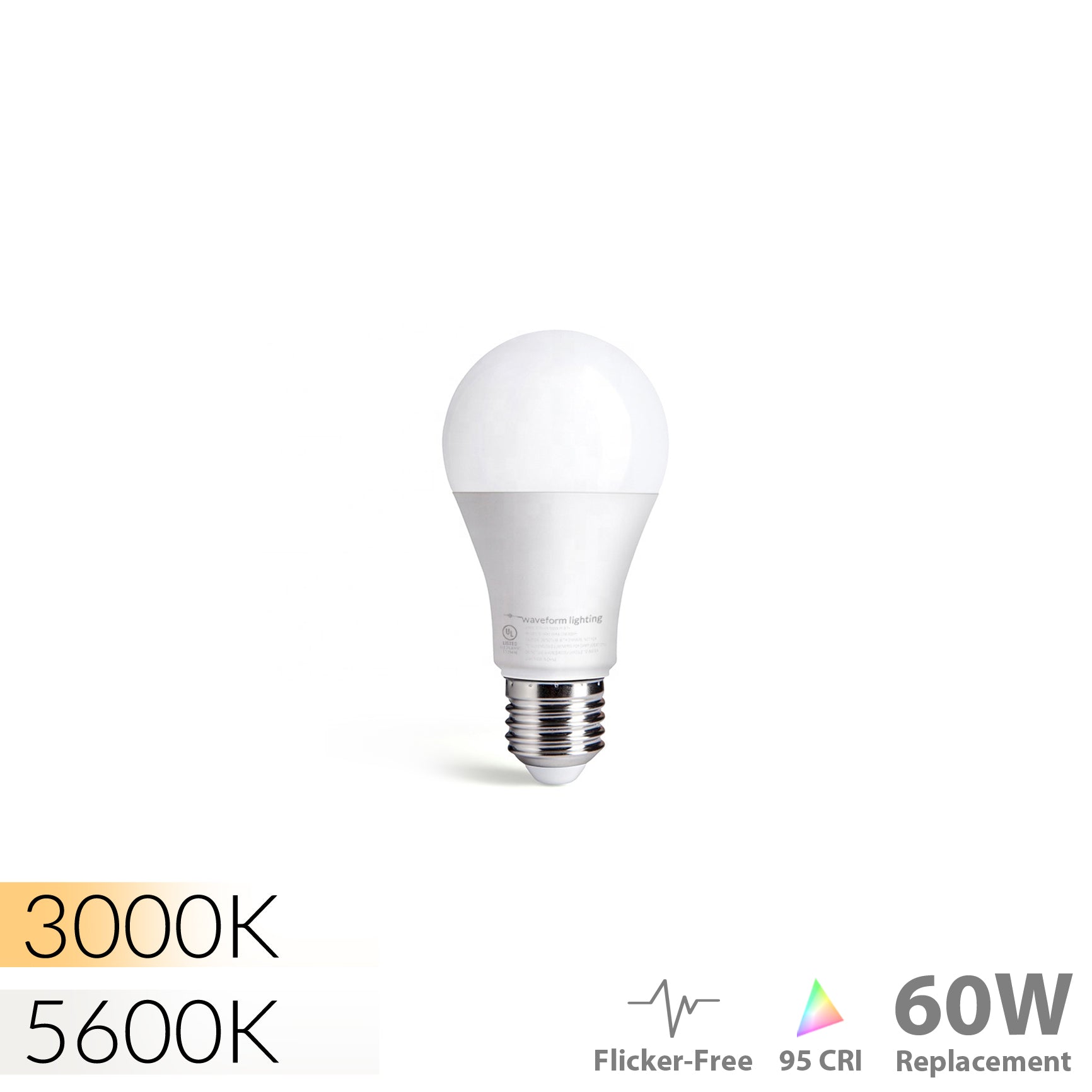The light should have the spectrum most similar to that of the sun, and that spectrum should change along the day, just as the natural sunlight does.
The most basic way to do so would be to use a light of ~5500K during the day, and a light that lacks blue and green light; i.e., it should be pure amber, orange, or red during the night, so as not to disrupt melatonin production.
If one wants to be more precise, we’d need a programmable bulb so that it can simulate sunrise and sunset (i.e. changing wavelengths from red to white, and being able to change the intensity from 0 to 100%), which would be great as a sunrise alarm clock; and the light should start and end the day at 2000K, with the whitest being midday at about 5500K. Again, after sunset, the light spectrum should have no emission below ~560 nm to avoid melanopsin-stimulating light (so no output in green or blue light).
—
Now, is there any product in the market that would allow us to do this?
I have looked around a lot and couldn’t find anything is close to being good enough.
Maybe the best option is this product: SunLike12-16S from http://sunlikelamp.com/ (I have no affiliation and the owner disowns me for asking too many questions :-)).
—
Advantages:
- The SunLike’s spectrums are the best I could ever find. 2200 K and 5600K are the most important ones for our purpose; then, either 3800K or 4000K is good to use briefly after/before sunrise/sunset to “smooth” the transition.
- The version with Zigbee should allow the bulb to be programmed to work by following a certain schedule. Has anyone tried this? Where can I get a Zigbee bridge that works with this?
—
Disadvantages:
- The pure red LED is only 3-4 V so the output would be ~300 lumens, which is too dim to use as the only bulb at night after sunset; you would need at least 2 of them to lighten a small-medium size room, and additionally 1 bulb more to be close to you if you want to read.
- The bulb will flicker on the order of magnitude of hundreds of Hz (e.g. 300Hz) when it is mixing colors or CCTs, or when it is not at full brightness. Which means that the bulb will be zero-flicker only when you are using the LEDS at maximum brightness with no mixing (e.g. 100-brightness pure red, blue or green, or 100-brightness 2200 K, 3800K or 5600K — I’m not sure what CTL they use in the LED mix thoght).
—
If someone bought this product, please could you share your experience and confirm if the bulb can be set up to do all this?
Thanks for reading
(This review is relevant: Sunlike 13SS E27 Adjustable CCT Bulb (2200K-5600K, CRI97))

